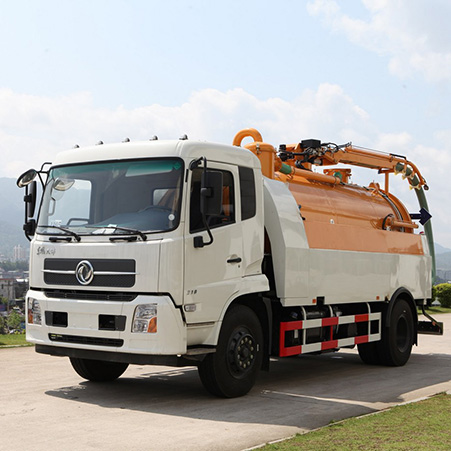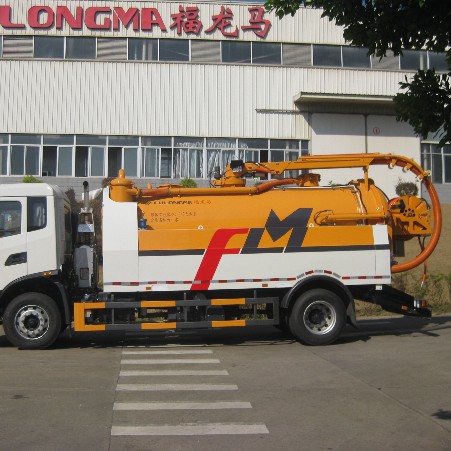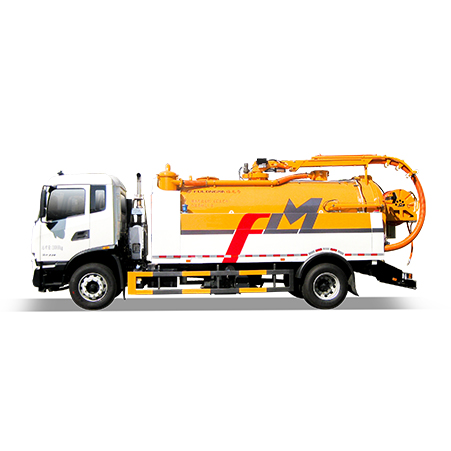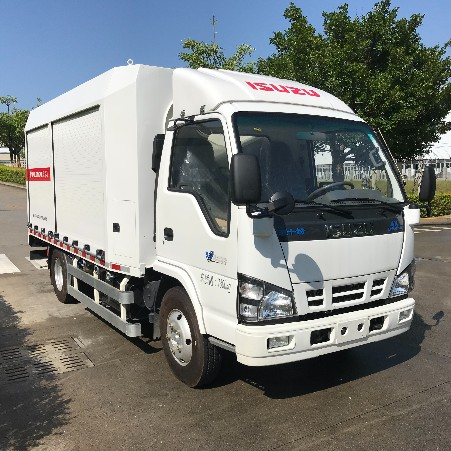Sewer systems play an essential role in maintaining urban health and hygiene. They transport wastewater and sewage away from homes and businesses, ensuring that our streets remain free of waste and pollutants. However, without regular maintenance and cleaning, these systems can become clogged with debris, grease, and other obstructions. This can lead to severe consequences such as sewage overflows, flooding, and contamination of drinking water sources. Effective sewer cleaning is thus crucial for preventing such issues and ensuring the smooth operation of our urban environments. That’s when the critical role of sewer cleaning trucks becomes apparent, as they swoop in to prevent blockages, backups, and public health issues.
Evolution of Sewer Cleaning Technology

Sewer cleaning technology has come a long way since the days of manual labor and rudimentary tools. In the early days, sewer maintenance involved labor-intensive processes with minimal equipment. Workers had to physically enter sewer systems to remove blockages, a hazardous and unpleasant job.
With the advent of the Industrial Revolution, mechanization began to transform sewer cleaning. The introduction of motorized trucks and basic vacuum systems improved efficiency but still faced challenges such as limited power and effectiveness. Over time, advancements in technology have led to the development of sophisticated sewer cleaning trucks equipped with high-pressure water jetting, hydro-excavation, and advanced camera systems. These innovations have significantly enhanced the effectiveness, safety, and efficiency of sewer maintenance operations.
Key Technologies in Modern Sewer Cleaning Trucks
Vacuum Systems
Vacuum systems are at the heart of modern sewer cleaning trucks. These systems use powerful suction to remove debris, sludge, and other materials from sewer lines. The vacuum truck’s large tank collects the waste, which can then be transported to treatment facilities. There are two main types of vacuum systems: wet and dry. Wet vacuum systems handle liquids and sludges, while dry systems are designed for dry materials like leaves and dust. The choice of system depends on the type of waste and the specific needs of the sewer maintenance operation.
High-Pressure Water Jetting
High-pressure water jetting is another key technology used in sewer cleaning. This method involves shooting high-pressure streams of water into sewer lines to break up blockages and clean the interior surfaces of pipes. The force of the water dislodges debris and helps flush it out of the system. This technique is highly effective at removing stubborn obstructions and grease buildup, ensuring that sewer lines remain clear and operational. Additionally, high-pressure water jetting is an environmentally friendly method that minimizes the need for harsh chemicals.

Hydro-Excavation
Hydro-excavation is a relatively new technology that combines high-pressure water with vacuum suction to safely and precisely excavate soil and uncover underground utilities. This method is particularly useful for locating and repairing sewer lines without causing damage to surrounding infrastructure. By using water to loosen the soil, hydro-excavation minimizes the risk of accidental damage and reduces the need for extensive digging. This precision improves the accuracy of repairs and reduces the impact on existing utilities.
Camera Systems
Camera systems are crucial for inspecting and diagnosing sewer issues. Modern sewer cleaning trucks are equipped with high-resolution cameras that can be inserted into sewer lines to capture real-time video footage. These cameras provide valuable insights into the condition of the pipes, allowing maintenance teams to identify blockages, cracks, and other problems without having to excavate. The use of camera systems improves the efficiency of sewer inspections and helps prioritize maintenance efforts based on the severity of the issues.
Benefits of Advanced Sewer Cleaning Technology
Advanced sewer cleaning technology offers numerous benefits that contribute to a cleaner, healthier city:
- Improved Efficiency: Modern technologies streamline the sewer cleaning process, reducing the time and labor required to maintain sewer systems. This increased efficiency minimizes disruptions to urban areas and ensures that maintenance is performed promptly.
- Enhanced Safety: Advanced equipment reduces the risks associated with sewer cleaning, including exposure to hazardous materials and physical injury. Technologies such as hydro-excavation and camera systems allow for safer and more precise operations.
- Cost Savings: Efficient sewer cleaning technologies can lead to long-term cost savings by preventing costly emergencies and reducing the need for extensive repairs. Regular maintenance also extends the lifespan of sewer infrastructure, reducing the need for expensive replacements.
- Environmental Impact: Technologies like high-pressure water jetting are environmentally friendly, reducing the reliance on harsh chemicals and minimizing the impact on surrounding ecosystems. Cleaner sewers also contribute to better water quality and reduced pollution.
Conclusion
Sewer-cleaning trucks equipped with advanced technology are revolutionizing urban infrastructure maintenance. By incorporating vacuum systems, high-pressure water jetting, hydro-excavation, and camera systems, these trucks ensure that our sewer systems remain functional, efficient, and safe. As technology continues to evolve, we can expect even more innovative solutions to further enhance the effectiveness of sewer maintenance and contribute to cleaner, healthier cities.
FAQs
How do modern sewer cleaning trucks differ from traditional models?
Modern sewer cleaning trucks incorporate advanced technologies such as high-pressure water jetting, hydro-excavation, and camera systems, which improve efficiency, safety, and effectiveness compared to traditional models.
What are the advantages of high-pressure water jetting in sewer cleaning?
High-pressure water jetting effectively removes blockages and cleans sewer lines by using powerful water streams. It is an environmentally friendly method that minimizes the need for chemicals and reduces the risk of pipe damage.
How does hydro-excavation improve sewer maintenance?
Hydro-excavation combines water and vacuum suction to safely and precisely excavate soil, reducing the risk of damaging underground utilities and improving the accuracy of repairs.
What role do camera systems play in sewer inspection?
Camera systems provide real-time video footage of sewer lines, allowing for detailed inspections and diagnosis of issues such as blockages and pipe damage without the need for excavation.
What are the main challenges associated with adopting advanced sewer cleaning technology?
Challenges include the high initial cost of advanced equipment, the need for specialized training, and ongoing maintenance requirements. However, these challenges are often outweighed by the long-term benefits of improved efficiency and reduced costs.







